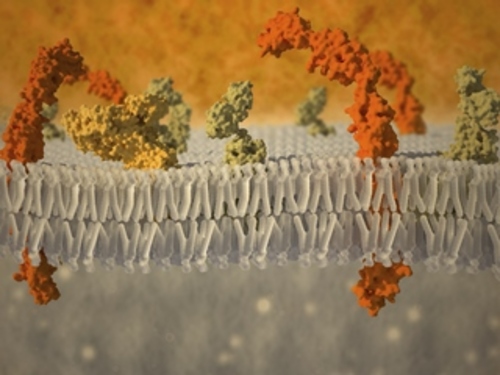A new study has shown how various pharmaceutical drugs activate or deactivate a signalling protein linked to asthma, obesity and type 2 diabetes.
The study, recently published in the journal Proceedings of the National Academy of Sciences, focused on the β2 adrenergic receptor (β2AR), a protein that sits on the cell membrane, where it binds external molecules and sends signals to the inside of the cell.
β2AR belongs to a class of modules called G protein-coupled receptors (GPCRs). It is known that GPCRs play a crucial role in disease and 35% of pharmaceuticals currently target these receptors. In the respiratory field, β2AR is known to affect asthma and cystic fibrosis.
In the past, studies have focused on catching snapshots of β2AR in its active and inactive forms using X-ray crystallography, which did not show frequency of activation or how different drug molecules governed the time spent in each state.
In this new study, researchers incorporated β2AR in "nanodiscs", small particles that mimic the native cell membrane but contain only a single receptor molecule. They tagged a section of the receptor with a fluorescent probe and monitored the fluorescence intensity over time in a sophisticated microscope system. The probe lit up when the receptor was inactive and went dim when active, giving the researchers a way to track activation in real time.
The researchers used this new method to test β2AR reactions to formoterol, an anti-asthma drug and to the drug ICI 118,551, an inverse agonist known to suppress signalling.
Results showed that the receptor naturally fluctuates between its active and inactive states in the absence of any drug. It was also found that the presence of formoterol does not just activate β2AR faster – it also stops β2AR from deactivating as quickly. The researchers also saw that ICI 118,551 caused β2AR to deactivate more rapidly. Together, the findings explain why β2AR exhibits some signalling activity even in the absence of any drug molecules and why different drugs can either stimulate or inhibit signalling.
The researchers stated that the next step after this study would be to utilise the new single-molecule florescence technology to find molecules that spark the same behaviour or to find molecule that could work on different GPCRs to affect different diseases.





